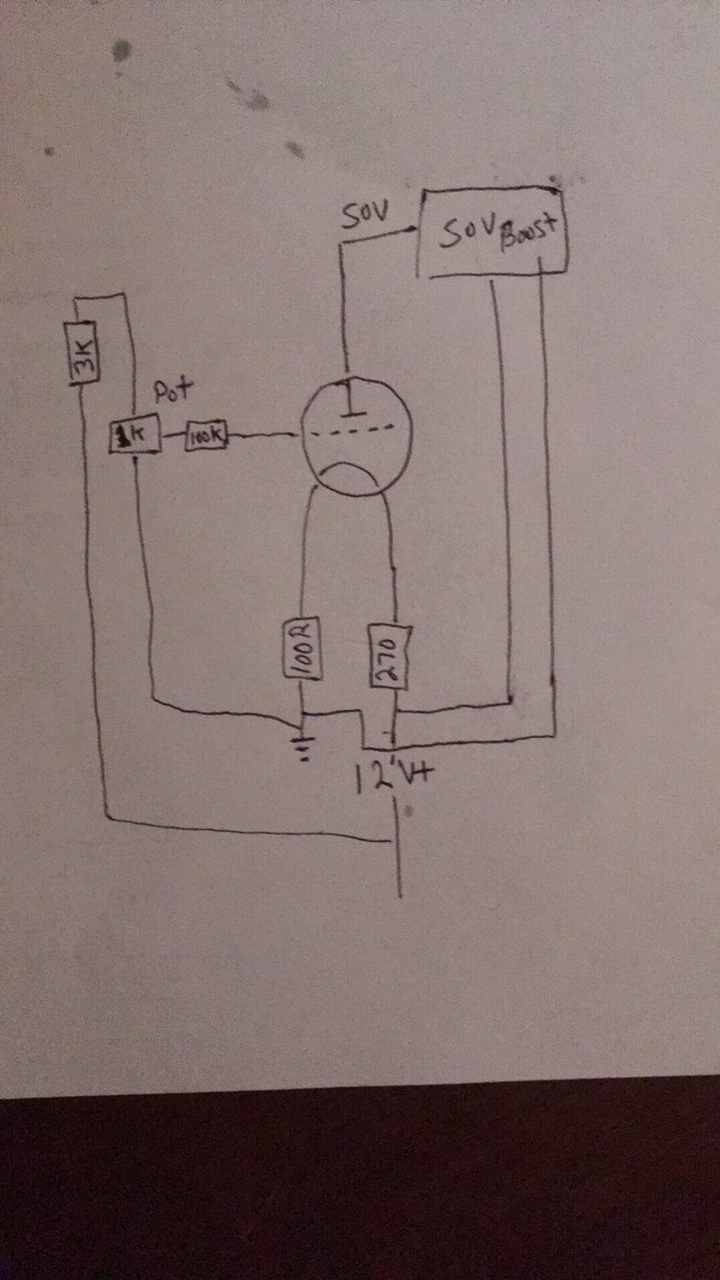IV-15/DM160 variable brightness nightlight
131 views
Skip to first unread message
Thomas Kummer
Dec 26, 2018, 11:42:52 PM12/26/18
to neonixie-l
I’d really like to make this, but I have little to no circuit design experience. How do I create -1.5 V on the grid? And would this power supply from a 12v walwart be sufficient for the anode voltage.
https://www.ebay.com/itm/Boost-DC-DC-Converter-Power-Supply-Step-up-Module-12V-60V-to-12V-80V-600W-10A-MA/263766583139?epid=922575533&hash=item3d69b6a763:g:MEcAAOSwkcFbKJ4i
https://www.ebay.com/itm/Boost-DC-DC-Converter-Power-Supply-Step-up-Module-12V-60V-to-12V-80V-600W-10A-MA/263766583139?epid=922575533&hash=item3d69b6a763:g:MEcAAOSwkcFbKJ4i
Thomas Kummer
Dec 26, 2018, 11:46:51 PM12/26/18
to neonixie-l
I’d like to add that I could pay for help, or a circuit design.
Thomas Kummer
Dec 27, 2018, 2:04:44 AM12/27/18
to neonixie-l
I've been looking at Paul Andrews schematic posted about 2 years ago. What I don't understand is what the dotted line from the 50v to ground means. Here is a link to the schematic.
Mark Moulding
Dec 27, 2018, 10:09:41 AM12/27/18
to neonixie-l
It looks to me that this should work. The filament resistors calculate out correctly, both for current and cathode bias voltage, and it's certainly a simple enough circuit.
I've played around a bit with the DM-160s, both as indicators and as actual amplification elements. As displays, thy're not very bright - certainly their state would be easily visible in an indicator panel (their original application), but like the first generation LEDs, they don't actually emit much light. I don't think they'd be a very effective nightlight... (They didn't make very good amplifiers either.)
For a nightlight application, I think I'd consider one of the many available VFD displays. They're equally easy to drive (a bit easier, actually - the drive voltage is often quite a bit lower at 24 volts or so). and they're available in all kinds of shapes and sizes.
~~
Mark Moulding
Mark Moulding
Thomas Kummer
Dec 27, 2018, 10:13:56 AM12/27/18
to neoni...@googlegroups.com
Which VFD would you recommend? I also bought IV-15’s.
Sent from my iPhone
--
You received this message because you are subscribed to the Google Groups "neonixie-l" group.
To unsubscribe from this group and stop receiving emails from it, send an email to neonixie-l+...@googlegroups.com.
To post to this group, send email to neoni...@googlegroups.com.
To view this discussion on the web, visit https://groups.google.com/d/msgid/neonixie-l/10666cc8-2f95-47c0-9948-aad6b73ccb72%40googlegroups.com.
For more options, visit https://groups.google.com/d/optout.
Thomas Kummer
Dec 27, 2018, 10:17:11 AM12/27/18
to neoni...@googlegroups.com
Here is an improved version of the schematic.


orange_glow_fan
Dec 28, 2018, 8:47:22 PM12/28/18
to neonixie-l
After you get your night light up and running.. if you have extra DM160s...you could try this amplifier...
It sounds surprisingly not too awful....
Thomas Kummer
Dec 29, 2018, 11:06:49 PM12/29/18
to neonixie-l
If I don’t blow through too many of them in the process. lol
Ian Sparkes
Jan 17, 2019, 9:02:21 AM1/17/19
to neonixie-l
I would be interested to know how that worked out. I would not have considered to try to use an analogue control of the grid, rather I would have gone down the PWM path. I do this in a couple of clocks of mine, and it works nicely. I have it set up to do linear dimming according to the ambient light level by varying the duty cycle.
Thomas Kummer
Jan 22, 2019, 10:24:18 AM1/22/19
to neonixie-l
It actually worked out fine, didn’t even blow one tube. I did at one point hook up the POT the wrong way and it started smoking and now doesn’t work 100% correct, but works good enough.
Reply all
Reply to author
Forward
0 new messages
